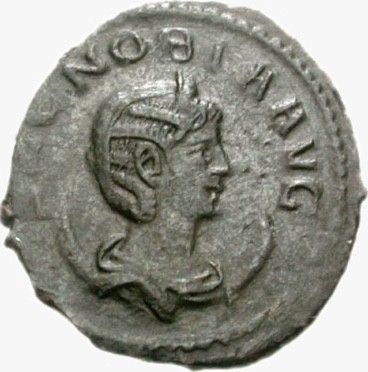Who was Queen Zenobia, and Why was she at war with Rome?
I am ecstatic to take you back in time to 3rd-century Syria. The Roman Empire continued to expand its vast borders, occupying region after region.

I am ecstatic to take you back in time to 3rd-century Syria. The Roman Empire continued to expand its vast borders, occupying region after region. Notorious for rejecting Roman advances, the Palmyrene Empire (modern-day Syria) sought to maintain its integrity with the help of its strong ruler, Queen Zenobia.
Early Life
Zenobia, birthname Julia Aurelia Zenobia, was born around 240 CE in the Palmyrene Empire. Historians know very little of her parentage, but she received the appropriate education as a noble child of the empire. Since the Roman Empire occupied Palmyrene as a province, Zenobia was also born a Roman citizen. Knowing that she was Palmyrene, she was most likely of Aramean and Arabic ancestry.

Zenobia enjoyed hunting in her youth as well as shepherding. While growing up, she learned many languages, including Greek, Latin, and Aramaic. Due to her arranged marriage to Lucius Septimus Odaenthus, the Roman governor of Syria, at the age of 14, her youth was unfortunately cut short.
From Consort to Regent
Odaenthus previously pledged his allegiance to Rome but soon rebelled after proving himself in battle and collecting enough power to rule over Palmyra as an independent state. Zenobia was his second wife, already fathering an heir with his first wife. Historians do not know much about her time as consort to Odaenthus, considering how little power she had in her own right.

In 261 CE, Maeonius, cousin to the king, killed Odaenthus and his son Herodes after a dispute over a hunting trip. Before Odaenthus passed, Zenobia did give birth to a son, Vaballathus, who became ruler with Zenobia as his regent.
To secure her rise to power through her son, Zenobia employed the leading intellectuals and scholars of the time as her royal council. Zenobia maintained her husband’s policies for the beginning of her rule due to the growing unrest between the Palmyrene soldiers and the ruling empire. Rome considered Palmyra to be a secure province due to this. As Palmyra grew calmer, Zenobia’s ambition grew stronger.
Invasion
At last, when Rome least expected it, Zenobia sent her forces to Egypt and claimed the Roman region as her own. Rome fought back, drove the Palmyrene troops out, and mounted a counterattack at the Palmyrene borders. Zenobia’s army beat the Romans, thus securing her and her son’s place as rulers of Egypt.
Her rule of Egypt and other surrounding areas went unnoticed by Rome until Aurelian, emperor of Rome, decided to challenge her. Zenobia ruled an empire stretching from modern-day Iraq down to Egypt by the time that happened.
Aurelian did not respond to him diplomatically. Instead, he gathered the entire Roman army and marched on the Palmyrene Empire. After attacking several cities loyal to Zenobia, he finally arrived at the epicenter of her power.
Zenobia rallied her forces and created a defense. The battle looked bleak for the Palmyrene, and Persia failed to send reinforcements. Before Aurelian and his army could find her, Zenobia and her son fled Palmyra and sought refuge in Persia. Unfortunately, Zenobia was caught, put in chains, and sent to Rome.
Her Final Days
What happens after Zenobia’s capture remains uncertain, according to historians. Some say she was paraded around Rome in chains and then married a wealthy Roman noble. Others say she was released immediately once arriving in Rome and given a palace to live out the rest of her days. The most likely story is that she went to trial, was acquitted, and then released to live in Rome. There is no record of when or how she died.

The story of Queen Zenobia became a legend over the next hundreds of years. She was an excellent ruler and warrior in her own right, and many artists glamorized her in paintings and stories. Today, she is remembered as a clever heroine and a symbol of feminine power.